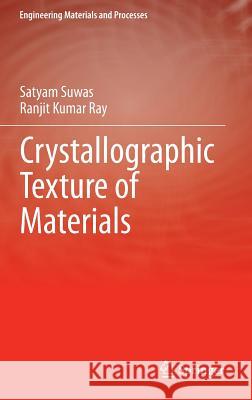Crystallographic Texture of Materials » książka
Crystallographic Texture of Materials
ISBN-13: 9781447163138 / Angielski / Twarda / 2014 / 260 str.
The properties of many crystalline materials depend on the individual properties of the crystallites and on their arrangements characterising the polycrystalline state. Since preferred orientations of the grains are very common phenomena, crystallographic texture plays a very important role in determining the mechanical and physical properties of materials. The texture may evolve during casting, processing, deformation, welding and heat treatment. Texture in structural materials have attracted significant interest over the years because of their special role in tailoring the properties of steels for automotive and electrical applications; zirconium alloys for cladding of nuclear reactor fuels, titanium alloys for structural materials in the aerospace and aircraft industry, magnesium alloys as structural materials in transportation vehicles or light-weight enclosures for 3C (computers, communication and consumer electronic) products. The potential application of wrought magnesium in the automotive industry is limited by its low room-temperature ductility. It is understood that control of texture can provide a way to overcome this problem. In recent years, texture tailoring has become an important step in the manufacturing of thin films for electronic applications, superconductors, magnets with high-energy products and shape memory alloys used for actuators in micro-electro-mechanical devices (MEMS). There are numerous other applications to this kind of research ranging from basic scientific understanding to technology development related programs. Crystallographic Texture in Materials describes the basics of crystallographic textures and their industrial applications, covering a broad range of both structural and functional materials. The concept of texture is introduced in a simple manner and the existing methods of representation and experimental determination of texture using conventional to modern techniques are depicted. The formation of texture in materials as a result of various processing schedules such as solidification, hot and cold rolling, recrystallisation annealing, etc., is discussed thoroughly. This is followed by a review of the various existing models for texture simulation and the extent of applicability of these models is evaluated. An evaluation of crystallographic textures as a function of processing conditions in specific materials of industrial importance is made, including the probable mechanisms. Additionally, an attempt has been made to correlate texture with material properties. This will be very useful in producing tailor-made materials with desired properties by choosing the right processing techniques. Crystallographic Texture in Materials will be useful to both students and academics in teaching and research institutions, as well as to practicing engineers in various industries engaged in the manufacturing and processing of materials.











